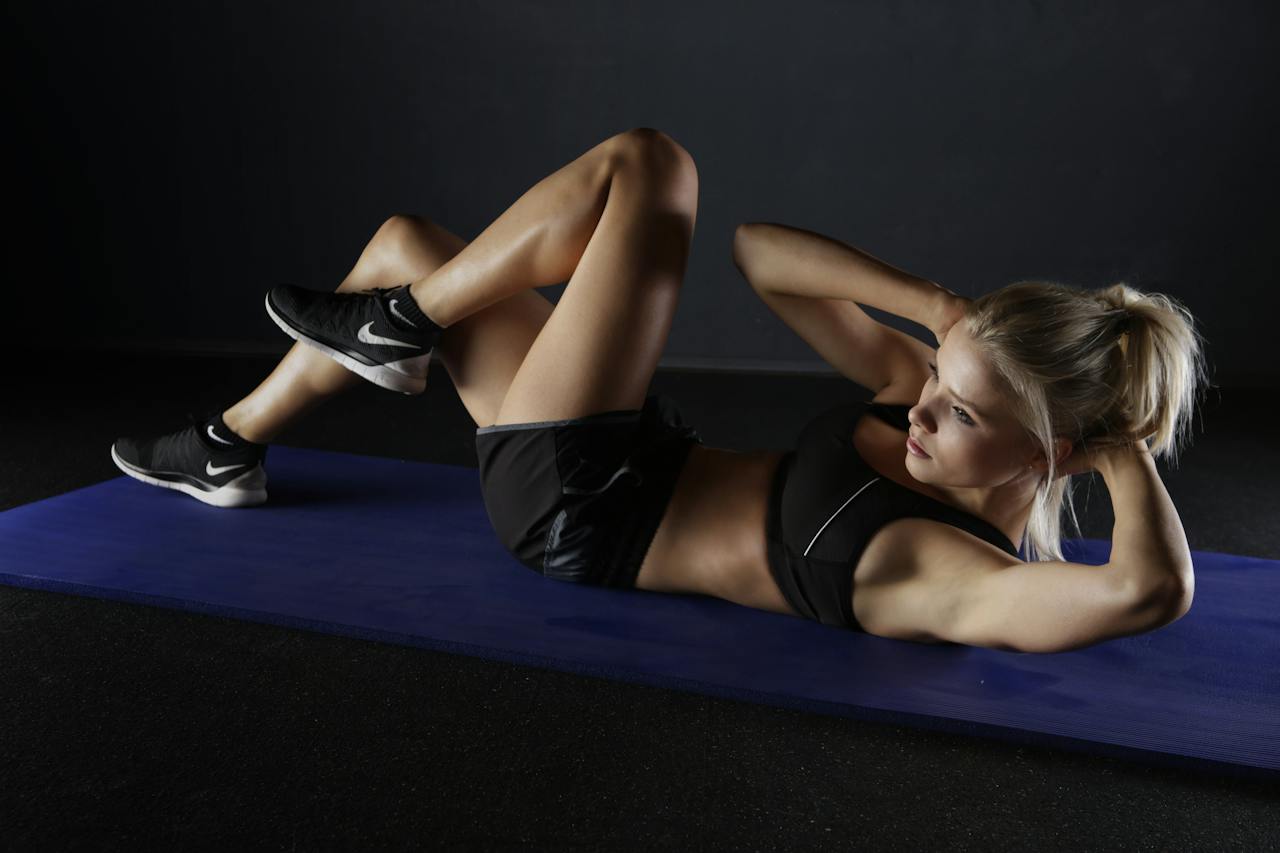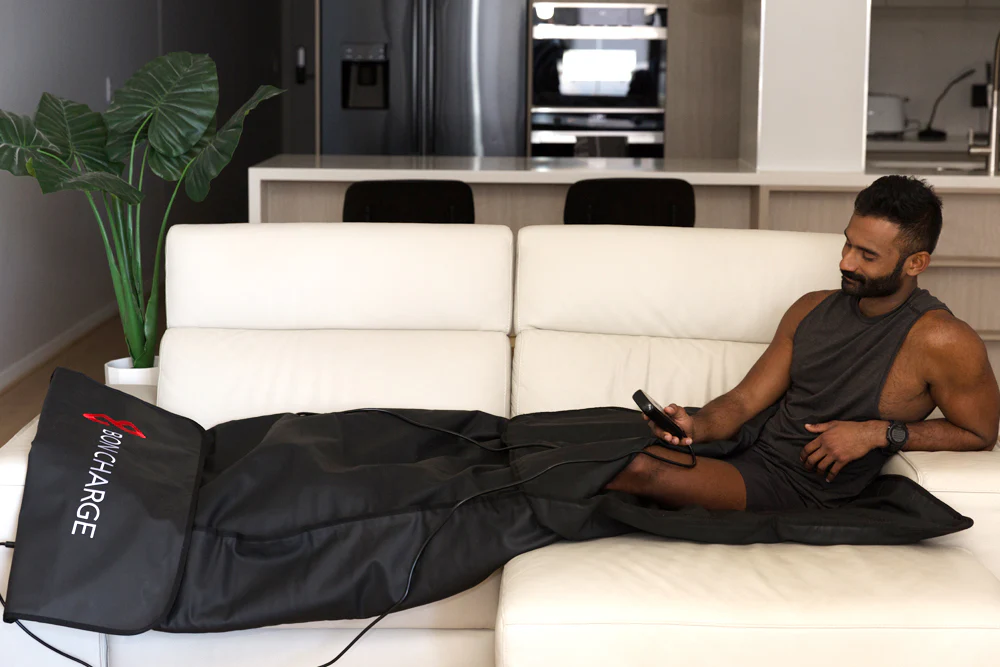- HOME
- Infrared Sauna Benefits
- Isometric Exercises
15 Isometric Exercises You Can Do In An Infrared Sauna
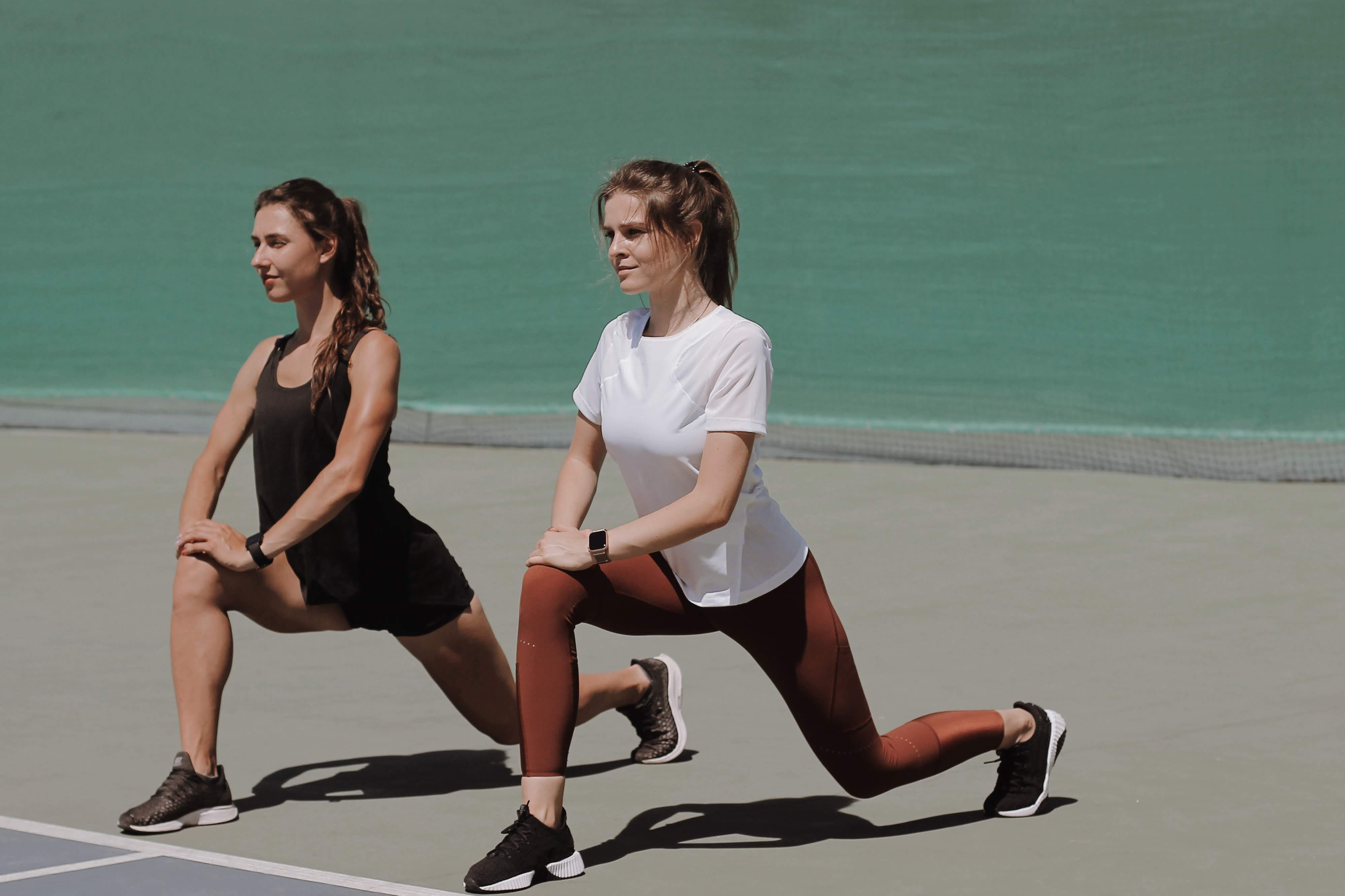
Lunge Hold
If you’d like to work your muscles and enjoy the infrared sauna heat at the same time, here are some straightforward isometric exercises suitable for working out in an infrared sauna or on your infrared PEMF mat.
Isometric exercises involve a static position to activate the muscles without movement, making it simple but effective [1]. These exercises are ideal because they do not require space for dynamic movements.
Choose the exercises that suit your body, space and health goals. They are great during and after a sauna session. That way you’ll benefit from the increased flexibility and muscle relaxation caused by the sauna heat.
Optimal Intensity in Isometric Exercises
Want to get the most out of your isometric exercises? Here’s a straightforward breakdown of key insights from a 2019 research into isometric training [2]:
Go Long for Growth: When doing isometric exercises, focus on maintaining longer muscle lengths. This approach has been shown to lead to greater muscle growth compared to shorter muscle lengths.
Add Some Speed: Incorporate exercises with a quick, explosive intent. This "ballistic" approach helps increase muscle activation and speeds up the development of force, making your workouts more effective.
Ramp Up the Intensity: To boost both muscle size and maximum strength, don't shy away from high-intensity contractions. Pushing yourself with contractions at 70% intensity or higher is also key for improving tendon health and function.
Enhance Your Performance: Training at longer muscle lengths not only builds strength but also translates better to dynamic movements, improving your overall athletic performance.
Exercise guidelines
As for the exercises, here's what to keep in mind as you perform them: Hold each exercise for 10-15 seconds and repeat 5-10 times with 30 seconds of rest between each repetition. However, feel free to adjust this to your comfort level.
For example, you start at a slower pace and with less reps, and increase them as you feel more comfortable.
exercises while seated
The following 5 exercises do not require much movement, making them ideal for a sauna where you have limited space. In general, these sitting exercises are easy to adapt and can serve as a great starting point, especially when you are new to isometric exercises, and exercising in the sauna.
Seated Leg Extensions (front thigh muscles)
Sit on the sauna bench with your back straight. Extend your legs out in front, keeping them parallel to the floor. Engage your quadriceps (front thigh muscles).and hold this position. You can also do this exercise with one leg at a time, alternating each time.
Benefits: Strengthens the thigh muscles, improves leg stability, and enhances muscular endurance.
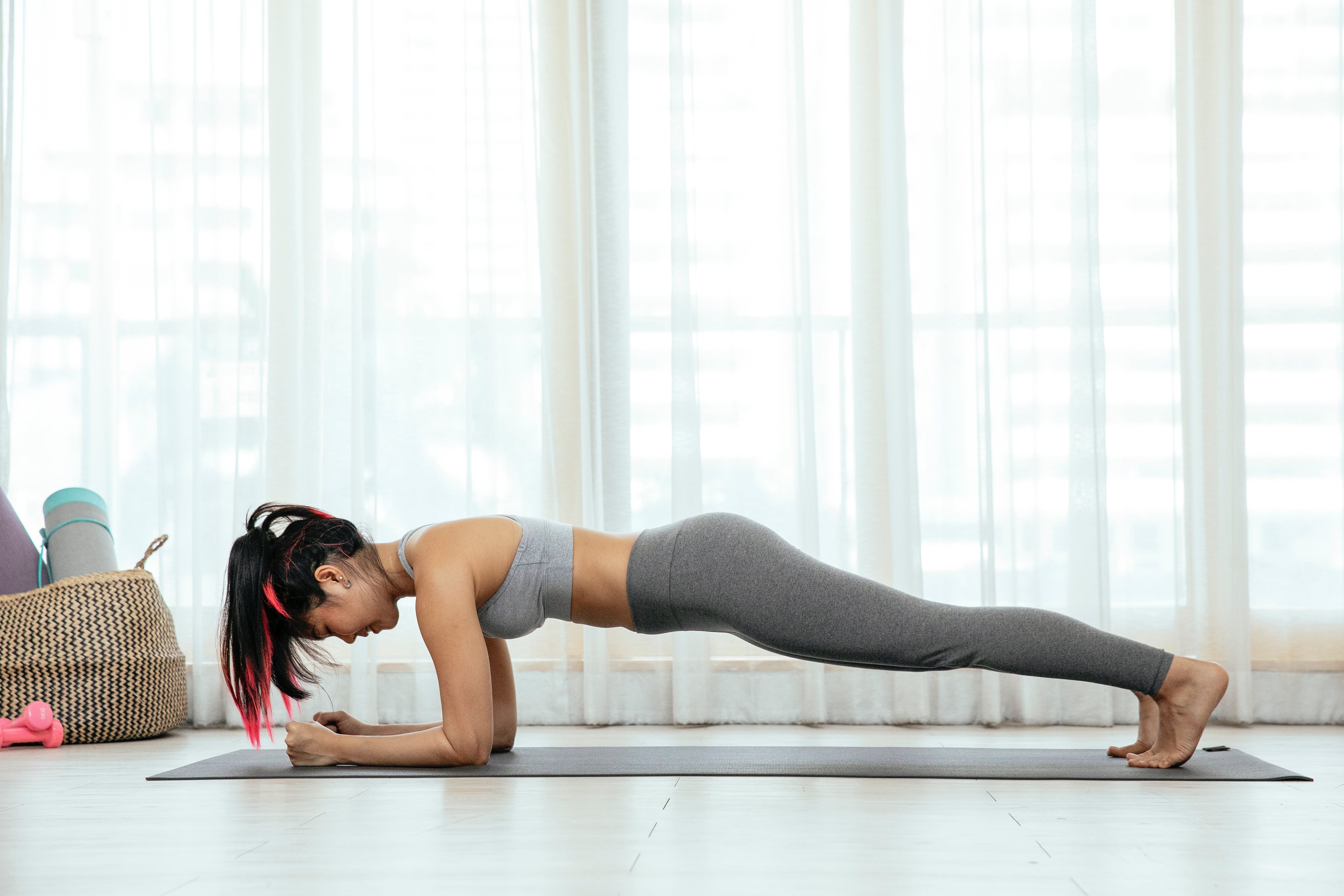
Plank Hold
Seated Arm Curls (biceps and forearm muscles)
Sit upright with your elbows bent at a 90-degree angle, palms facing each other. Press your palms together firmly and hold.
Benefits: Builds arm strength and muscular endurance, useful for tasks requiring grip strength and arm stability.
Seated Core Compression (entire core, including the abdominals and lower back)
Sit with your back straight and engage your abdominal muscles as if bracing for impact. Hold this tight, engaged position.
Benefits: Strengthens the core, which is vital for overall stability and can help in improving posture.
Seated Chest Squeeze (chest muscles)
Press your palms together in front of your chest, elbows out to the sides. Squeeze your chest muscles and hold the position.
Benefits: Enhances chest muscle tone and strength, beneficial for upper body stability.
Seated Calf Raises (calf muscles):
Place your feet flat on the ground. Raise your heels as high as possible, engaging your calf muscles, and hold.
Benefits: Strengthens the calve muscles, important for activities involving walking, running, or balancing.
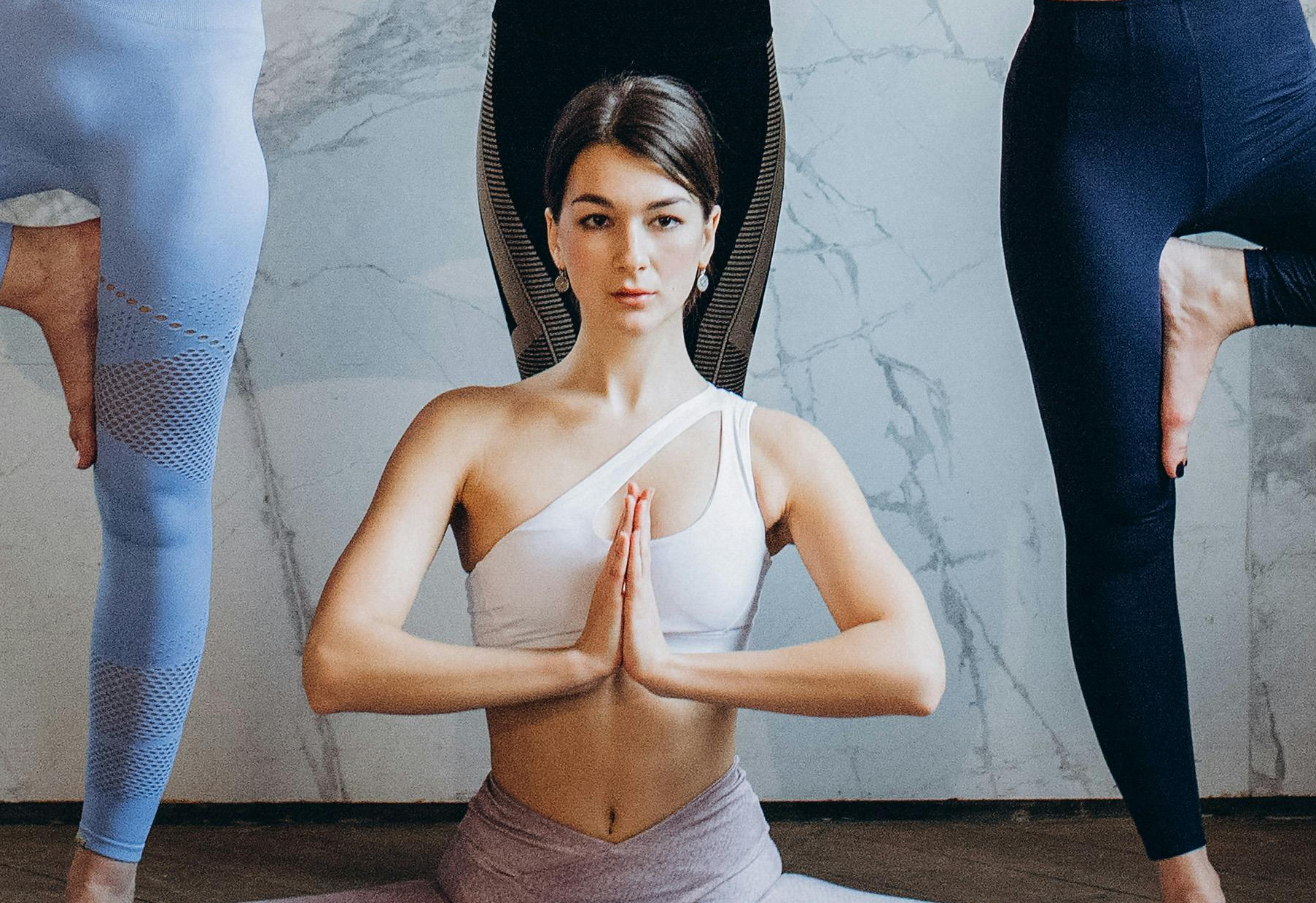
Seated Arm Curls
exercises while lying on a sauna bench
These exercises are ideal for an infrared sauna with slightly more space, allowing for a broader range of muscle engagement.
Lying Leg Raise Hold (lower abdominals and hip flexors
Lie on your back on the sauna bench. Raise your legs slightly off the bench, keeping them straight. Engage your lower abdominal muscles and hold this raised position.
Benefits: Strengthens the lower abdominal region, aids in core stability, and can improve lower back health.
Lying Glute Bridge (glutes, hamstrings, and lower back)
Lie on your back with your knees bent and feet flat on the bench. Lift your hips off the bench by squeezing your glutes and hold this bridge position.
Benefits: Increases the posterior chain, which is excellent for good posture and lower back health.
Lying Chest Press (chest muscles and triceps)
Lie on your back, bend your elbows at a 90-degree angle, and press your palms together above your chest. Engage your chest muscles and hold.
Benefits: Strengthens the chest and arms, builds upper body stability.
Lying Side Leg Hold (obliques and outer thigh muscles)
Lie on your side, legs stacked. Lift your upper leg slightly and hold. Make sure your body is in a straight line.
Benefits: Improves hip stability and bolsters the side abdominal muscles.
Lying Y Hold (upper back and shoulder muscles)
Lie face down, extend your arms above your head in a 'Y' shape. Lift your arms slightly off the bench, engaging your back muscles, and hold.
Benefits: Augments upper back strength and shoulder stability, beneficial for posture.
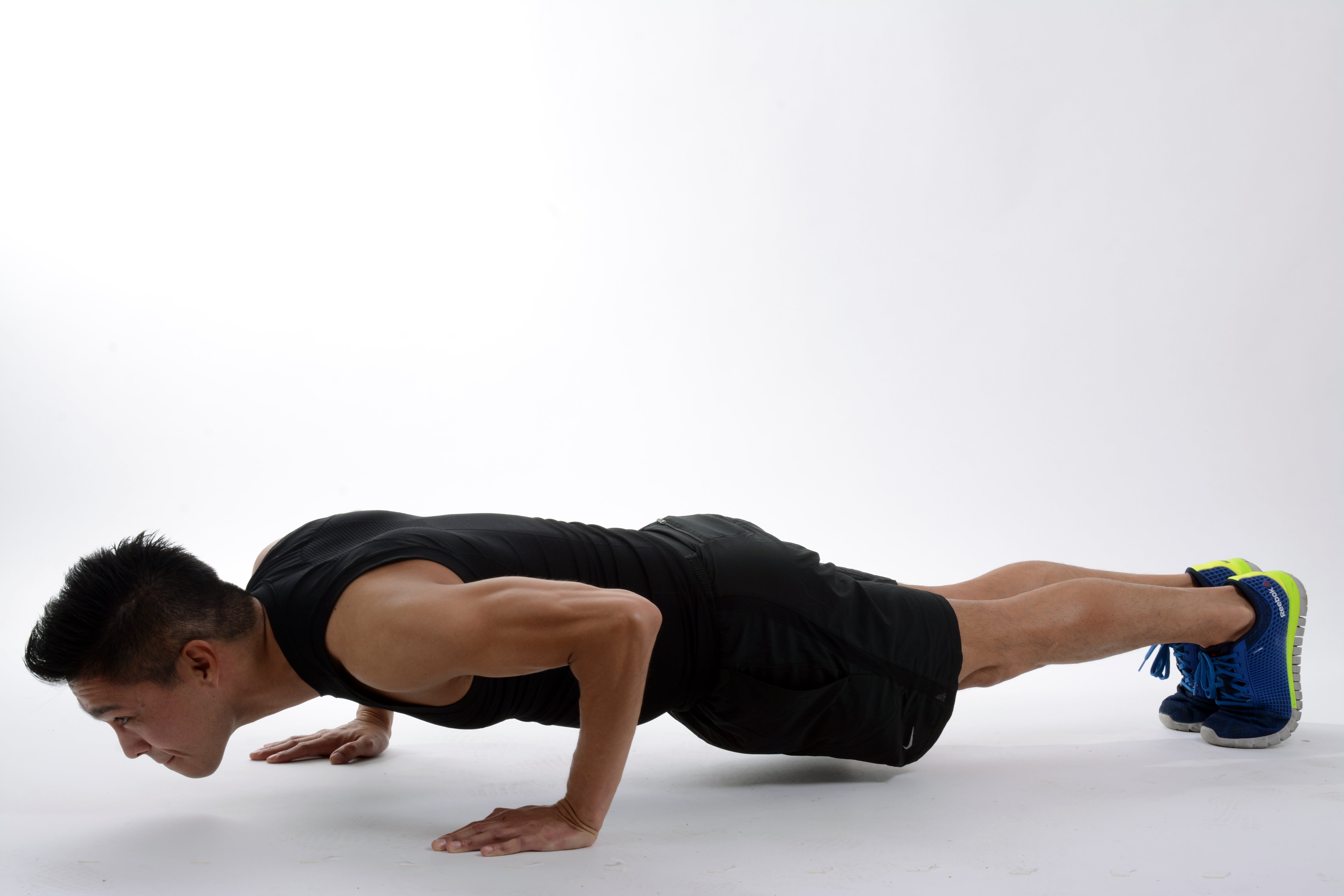
Push Up Hold
exercises on mat
These 5 exercises are suitable for a spacious sauna and provide a challenging and comprehensive workout. These exercises engage a broader range of muscles and may require greater strength and stability.
They can be integrated into a sauna workout routine that progresses from easier to more challenging over time.
Plank Hold (entire core, including abdominals, lower back, and shoulders)
Get into a forearm plank position, elbows under your shoulders, legs extended. Engage your core and hold your body in a straight line.
Benefits: Improves core strength and stability, vital for overall fitness and injury prevention.
Wall Sit (quadriceps, glutes, and calves)
Stand with your back against a sauna wall, feet shoulder-width apart. Slide down the wall until your knees are at a 90-degree angle, thighs parallel to the floor. Hold this position.
Benefits: Builds lower body strength and endurance, helpful in activities like running and cycling.
Lunge Hold (glutes, quadriceps, and hamstrings)
Step into a lunge position, one foot forward, the other back. Lower your hips until both knees are bent at about 90 degrees. Hold this position.
Benefits: Enhances lower body strength, balance, and stability.
Push-Up Hold (chest, triceps, and core)
Get into a push-up position, lower yourself halfway and hold.
Benefits: Strengthens upper body and core, useful for improving overall upper body fitness.
Superman Hold (back, glutes, and hamstrings)
Lie face down and extend your arms and legs, lift them slightly off the ground, and hold.
Benefits: Improves posture, back strength, and overall body alignment.
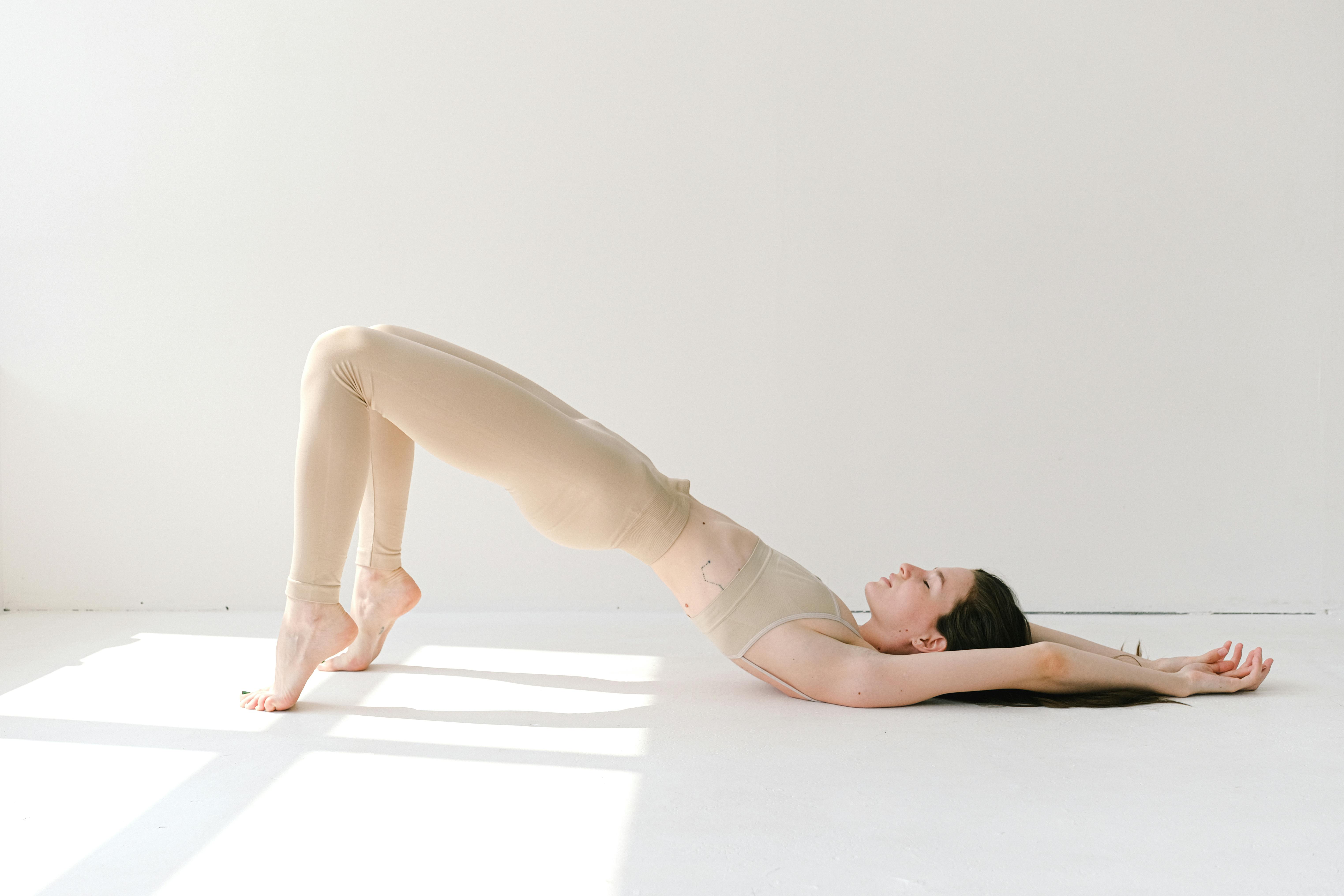
Glute Bridge Hold
Customize your fitness routine
In fitness, there's no one-size-fits-all. We’ve provided a blueprint, but you can adjust the practice to your likes and needs. This is your journey, your pace, your exercises. Below you will find some guidance, but we challenge you to find your own unique rhythm in your exercise routine.
While doing so, keep the following in mind:
Listen to Your Body: Sauna sessions can be intense, so remember to stay adequately hydrated. It's important not to push yourself too hard too soon. Respect your comfort level and gradually challenge it.
Gradual Increase: Think of it as a journey. Begin with manageable durations and frequencies, then slowly raise the bar. It's a steady climb, not a sprint. Progress at a pace that suits you.
Rest and Recovery: Even in the sauna, rest is your body's best friend. Give your muscles the downtime they deserve. Rest days are like pit stops on your way to fitness.
Beginner Routine (Weeks 1-2)
Familiarization with isometric exercises and sauna environment.
Exercises: Seated Leg Extensions, Seated Arm Curls, Seated Core Compression.
Duration: Hold each exercise for 10-15 seconds, repeating 2-3 times with 30-second rests.
Frequency: 2-3 times per week.
Intermediate Routine (Weeks 3-4)
Build endurance and introduce more challenging exercises.
Exercises: Add Lying Leg Raise Hold and Lying Glute Bridge to the beginner level exercises.
Duration: Hold each exercise for 20-30 seconds, repeating 3-4 times with 30-second rests.
Frequency: 3-4 times per week.
Advanced Routine (Weeks 5-6)
Maximize strength and endurance, and incorporate full range exercises.
Exercises: Incorporate Plank Hold, Wall Sit, and Lunge Hold.
Duration: Hold each exercise for 30-45 seconds, repeating 3-5 times with 30-second rests.
Frequency: 4-5 times per week.
Ready to give it a try? Gauge the available space in the sauna, discover the exercises you like and adapt them to your goals. These sauna exercises offer benefits both during or after your sauna session, enhancing your flexibility and muscle relaxation.
Whether you're a beginner or advanced, create your unique fitness routine. Exercising in the sauna gives you the best of two healthy wellness activities.

Diane Sargent
References
1. Edward R. Laskowski, Are isometric exercises a good way to build strength? Mayo Clinic, https://www.mayoclinic.org/healthy-lifestyle/fitness/expert-answers/isometric-exercises/faq-20058186
2. Dustin J Oranchuk et al., Isometric training and long-term adaptations: Effects of muscle length, intensity, and intent: A systematic review, PubMed, https://pubmed.ncbi.nlm.nih.gov/30580468/
Looking for more information? These articles might be of interest

